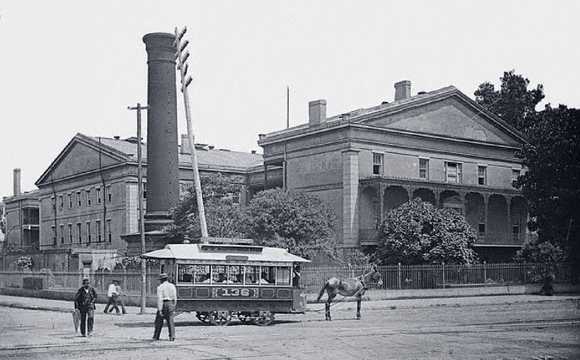Bellevue 425-454-1283 · Lynnwood 425-672-2646 · Issaquah 425-392-0450 · Tacoma 253-328-4014

This is the second article in a series on United States Mints.
During the 1830s the U.S. was in the midst of a swift expansion. As explorers and settlers pushed further South and West, infrastructure was needed. Amongst the missing amenities in these new regions, was a facility to produce currency.
Even though the Philadelphia Mint produced a substantial amount of coinage, the demand for coins along the Eastern seaboard outweighed the supply. Available currency in the not yet established Southern and Western regions of the U.S. was much harder to come by. Some historians estimate that in 1830 there was about one small silver coin per person in the U.S. Not only were there not enough coins, there wasn’t a reliable way to traffic them to the ever-expanding borders of the new country.
Andrew Jackson was a Tennessee native, and saw the need to get funds out to Southern regions. His legislation helped create three Southern U.S. Mints. New Orleans LA, Charlotte NC, and Dahlonega GA were all selected as future U.S. mint locations. Charlotte and Dahlonega were chosen for their proximity to gold and silver mines. However New Orleans had a number of other things going for it that made it the ideal location for a mint.
At that time, New Orleans was one of the largest cities in the U.S. In the early 1800s, New Orleans’ conducted more international trade than any other port in the country. Large shipments of Mexican gold and silver regularly traveled through their port. In addition, gold had recently been discovered in nearby Alabama. All of these factors made New Orleans the ideal location for a new U.S. Mint.
The New Orleans Mint opened its doors in March of 1838. The first transaction was a gold bullion deposit from Mexico. It wasn’t until May that coin manufacturing began. Thirty silver dimes were the first coins minted at the New Orleans Mint. Silver and gold coins in denominations from three-cent coins, all the way to $20 gold coins were produced.
The New Orleans mint operated smoothly until the Civil War broke out. On January 26th 1861, Louisiana seceded from the Union. Under the new state laws, the federally run mint was allowed to continue operating using mint workers were no longer federal employees, but now employees of the state of Louisiana. Confederate production at the mint proved to be far from prolific. That year, Confederates minted only one coin, the $20 Gold Eagle. Confederate minted $20 Gold Eagles from that year are now worth a small fortune.
By that spring, confederate soldiers ran out of bullion, and coin production ceased. After that, the mint was mostly used for housing confederate soldiers. The following year, Union soldiers captured the mint, along with the rest of New Orleans. Though not operational, the U.S. occupation of New Orleans upset many locals, who sided with the confederacy. One steamboat gambler ripped the U.S. flag off the top of the Mint building, and was subsequently hung.
Fifteen years after the Mint was taken over by Confederate soldiers, its doors once again opened for U.S. operations, this time as an Assaying Office. An Assaying Office helps evaluate precious metals for consumers and banks. Three years later, it opened for full operations.
For over twenty years, the New Orleans Mint continued to produce gold and silver U.S. coinage. Many different U.S. denominations were struck, including half-dollars, silver dollars, and $5 and $10 coins. Additionally, in 1907 the federal government minted over five million silver twenty-centavo coins for Mexico.
The same year the U.S. minted silver coins for Mexico, the government ordered mints to stop issuing silver dollars. Considering this made-up the vast majority of coinage minted at New Orleans, this took a toll on the fledgling mint. With new mint facilities in gold rich San Francisco and Denver, there was no need for the mint in New Orleans. Sadly, in 1911, the New Orleans Mint closed. Though somewhat short-lived, the New Orleans Mint helped establish the vital need for currency in the Southern and Western regions of the country during that period of our history.
The New Orleans Mint lives on in many ways that even some modern U.S. Mint facilities don’t. The gorgeous and much beloved building itself is the oldest mint facility still in use. Though no coins have been minted in over a century, it’s now home to an art gallery.
Bellevue Rare Coins specializes in gold buying and dealing in rare coins. We are a family-owned business located in Bellevue and Lynnwood. We also buy and sell silver, diamonds, currency and jewelry. Visit us for a free evaluation.
Do you like this post? Share it, +1 on Google+, or like on Facebook.